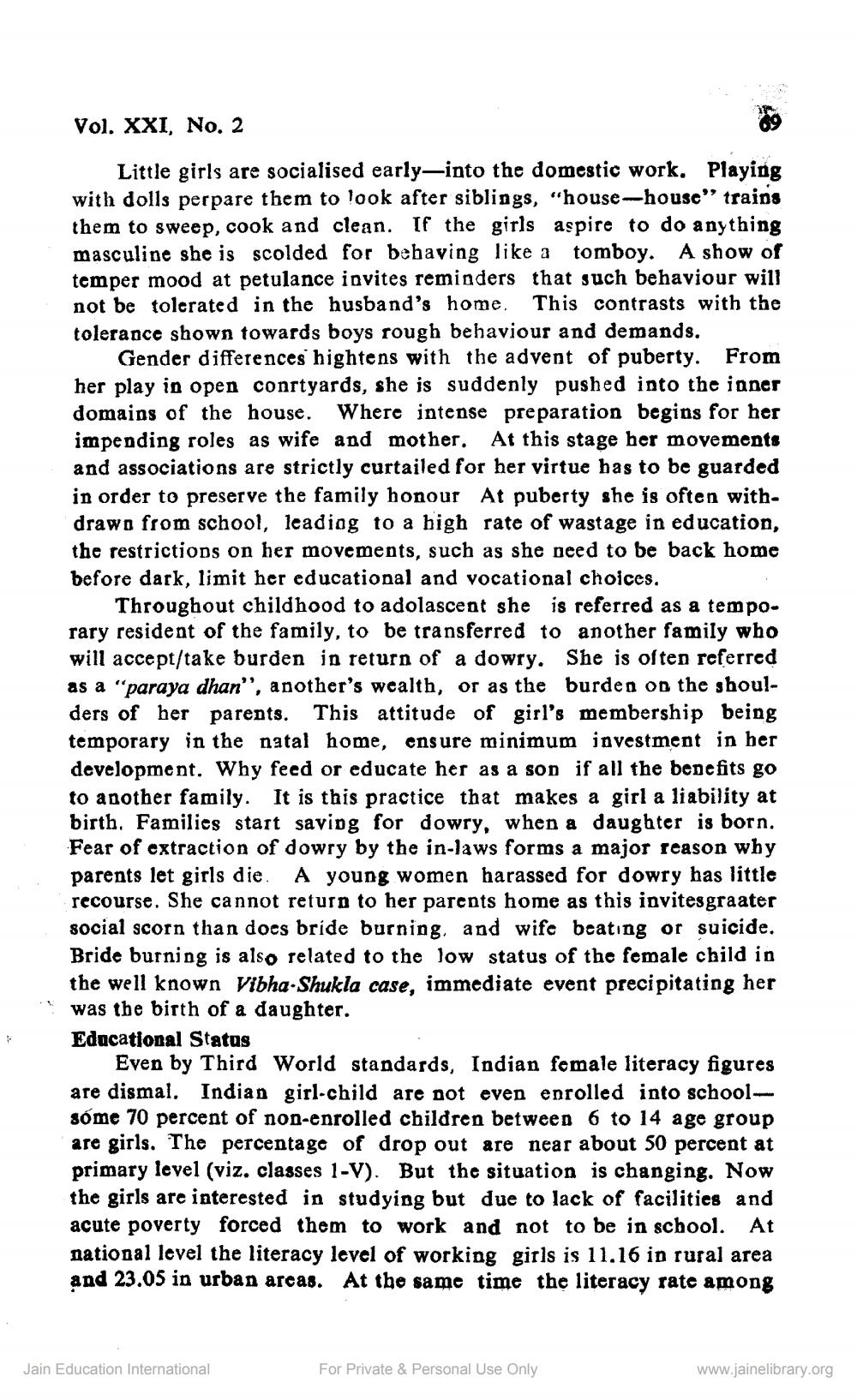________________
Vol. XXI, No. 2
Little girls are socialised early-into the domestic work. Playing with dolls perpare them to look after siblings, "house--house" trains them to sweep, cook and clean. If the girls aspire to do anything masculine she is scolded for behaving like a tomboy. A show of temper mood at petulance invites reminders that such behaviour will not be tolerated in the husband's home. This contrasts with the tolerance shown towards boys rough behaviour and demands.
Gender differences hightens with the advent of puberty. From her play in open conrtyards, she is suddenly pushed into the inner domains of the house. Where intense preparation begins for her impending roles as wife and mother. At this stage her movements and associations are strictly curtailed for her virtue has to be guarded in order to preserve the family honour At puberty she is often with. drawo from school, leading to a high rate of wastage in education, the restrictions on her movements, such as she need to be back home before dark, limit her educational and vocational choices.
Throughout childhood to adolascent she is referred as a tempo. rary resident of the family, to be transferred to another family who will accept/take burden in return of a dowry. She is often referred as a "paraya dhan", another's wealth, or as the burden on the shoulders of her parents. This attitude of girl's membership being temporary in the natal home, ensure minimum jovestment in her development. Why feed or educate her as a son if all the benefits go to another family. It is this practice that makes a girl a liability at birth. Families start saving for dowry, when a daughter is born. Fear of extraction of dowry by the in-laws forms a major reason why parents let girls die. A young women harassed for dowry has little recourse. She cannot return to her parents home as this invitesgraater social scorn than does bride burning, and wife beating or suicide. Bride burning is also related to the low statu
ning is also related to the low status of the female child in the well known Vibha Shukla case, immediate event precipitating her was the birth of a daughter. Educational Status
Even by Third World standards, Indian female literacy figures are dismal, Indian girl-child are not even enrolled into schoolsome 70 percent of non-enrolled children between 6 to 14 age group are girls. The percentage of drop out are near about 50 percent at primary level (viz. classes 1-V). But the situation is changing. Now the girls are interested in studying but due to lack of facilities and acute poverty forced them to work and not to be in school. At national level the literacy level of working girls is 11,16 ip rural area and 23.05 in urban areas. At the same time the literacy rate among
Jain Education International
For Private & Personal Use Only
www.jainelibrary.org




